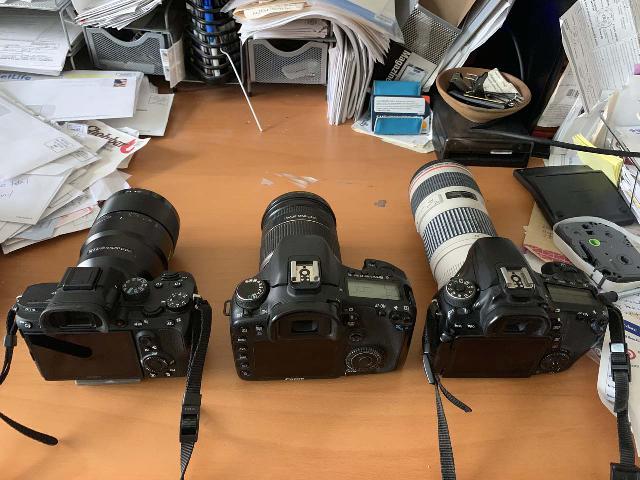
Photography, a practice that captures moments in time, has undergone a remarkable evolution since its inception. From its rudimentary beginnings to the advanced digital systems of today, the journey of photography equipment reflects not only technological advancements but also shifts in cultural and artistic perspectives. This historical exploration delves into the major milestones that have shaped photography equipment over the decades.
The Dawn of Photography: Early Experiments
The story of photography begins in the early 19th century with the quest to create a permanent image. The first successful method was the daguerreotype, invented by Louis Daguerre in 1839. This early photographic process involved exposing a silver-coated copper plate to light in a camera obscura, producing a detailed but one-of-a-kind image. The daguerreotype was the first widely adopted photographic method and set the stage for future developments.
Around the same time, Henry Fox Talbot developed the calotype process, which utilized paper coated with silver iodide. Unlike the daguerreotype, calotypes allowed for multiple copies of an image, a significant step forward in photographic reproducibility. This innovation laid the groundwork for the modern photographic negative-positive process.
The Birth of Modern Photography: 19th to Early 20th Century
As the 19th century progressed, so did photographic technology. The introduction of wet collodion plates in the 1850s marked a significant advancement. These plates offered greater detail and shorter exposure times than previous methods but required photographers to prepare and develop the plates on-site, making photography a cumbersome process.
The invention of dry plates in the 1870s, which used gelatin to hold the light-sensitive chemicals, revolutionized photography. These plates could be prepared in advance and stored for extended periods, making photography more accessible and less dependent on immediate processing. The development of roll film in the late 19th century by George Eastman further transformed the field. Eastman’s Kodak camera, introduced in 1888, was the first camera designed for mass consumer use. It came pre-loaded with film and was simple enough for amateurs to use, democratizing photography and leading to the popularization of snapshot photography.
The Rise of Color and Instant Photography: Mid 20th Century
The early 20th century saw the rise of color photography, although the process was initially complex and expensive. The Autochrome plate, introduced in 1907, was one of the first successful color photography methods. It used microscopic grains of colored starch to create color images, but the process was not widely adopted until the 1930s, when it became more accessible to both professionals and amateurs.
Instant photography emerged in the mid-20th century with the introduction of the Polaroid camera. Invented by Edwin Land, the Polaroid camera allowed users to take a photo and have a developed print within minutes. This instant gratification revolutionized personal photography and became a cultural phenomenon, capturing everyday moments with a unique, immediate quality.
The Digital Revolution: Late 20th to 21st Century
The late 20th century marked a seismic shift in photography with the advent of digital technology. The first digital cameras were introduced in the 1990s, but it was not until the early 2000s that digital photography became mainstream. The key advantage of digital cameras was their ability to capture, store, and manipulate images electronically, eliminating the need for film and chemical processing.
Early digital cameras had limited resolution and were expensive, but technological advancements quickly improved image quality and affordability. The transition from film to digital also brought about the development of digital single-lens reflex (DSLR) cameras, which combined the flexibility of digital technology with the precision of traditional optical systems. These cameras offered high resolution, interchangeable lenses, and advanced controls, making them a favorite among both professional and enthusiast photographers.
The rise of smartphones equipped with high-quality cameras further transformed photography. With the integration of powerful sensors, sophisticated image processing, and connectivity, smartphones have become the primary tool for capturing and sharing images. The convenience and versatility of smartphone cameras have made photography accessible to a broader audience and have played a significant role in the proliferation of visual content on social media.

The Future of Photography Equipment
As we move further into the 21st century, photography equipment continues to evolve at a rapid pace. The development of mirrorless cameras, which offer similar capabilities to DSLRs but with a more compact design, is one example of ongoing innovation. These cameras utilize electronic viewfinders and lack the mirror mechanism found in traditional DSLRs, leading to lighter and more versatile designs. If you are looking for more ideas about drone photography for beginners, you may visit their page to learn more.
The rise of artificial intelligence and computational photography is also shaping the future of photography. AI-powered features, such as scene recognition, automatic enhancements, and advanced image processing, are becoming increasingly prevalent in modern cameras and smartphones. These technologies allow photographers to achieve results that were once only possible with complex techniques and equipment.
Moreover, the integration of augmented reality (AR) and virtual reality (VR) into photography opens up new possibilities for immersive experiences and creative expression. AR and VR technologies enable users to explore and interact with photographic content in novel ways, offering new dimensions to storytelling and visual art.
Conclusion
The evolution of photography equipment is a testament to human ingenuity and creativity. From the early daguerreotypes to the sophisticated digital and computational tools of today, each advancement has contributed to the way we capture and perceive the world. As technology continues to advance, it will undoubtedly bring about new innovations and possibilities, ensuring that the art and science of photography remain dynamic and ever-evolving.

